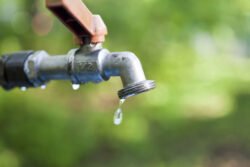
Northeast Water Pollution Control Plant
The Northeast Water Pollution Control Plant, located in Philadelphia, Pennsylvania, plays a crucial role in treating wastewater and protecting the environment. With a capacity to treat up to 220 million gallons of wastewater per day, the plant serves over one million residents in the northeastern part of the city. In this article, we will explore the functions of the Northeast Water Pollution Control Plant, the challenges it faces, and the efforts being made to ensure clean water for the community.
The primary function of the Northeast Water Pollution Control Plant is to treat wastewater before releasing it back into the environment. Wastewater from residential, commercial, and industrial sources flows through a network of pipes to the plant, where it undergoes a series of treatment processes to remove pollutants and contaminants. These processes include physical, chemical, and biological treatment methods to ensure that the water is safe to be discharged into the Delaware River.
One of the key challenges faced by the Northeast Water Pollution Control Plant is the presence of pollutants in the wastewater that can harm the environment and human health. These pollutants include chemicals, heavy metals, pathogens, and nutrients that can cause water quality issues and harm aquatic life. In order to address these challenges, the plant utilizes advanced treatment technologies and monitoring systems to ensure that the water is treated effectively and meets regulatory standards.
Another challenge faced by the Northeast Water Pollution Control Plant is the aging infrastructure that needs to be upgraded and maintained to ensure its continued operation. The plant was originally built in the 1960s and has undergone several upgrades over the years to meet increasing demands and regulatory requirements. However, ongoing investments are needed to modernize the plant and improve its efficiency in treating wastewater.
In recent years, the Northeast Water Pollution Control Plant has been implementing sustainable practices to reduce its environmental impact and energy consumption. These practices include the use of renewable energy sources, such as solar and wind power, to reduce the plant’s carbon footprint. Additionally, the plant has introduced green infrastructure initiatives, such as rain gardens and permeable pavement, to manage stormwater runoff and prevent pollution of the river.
Moreover, the Northeast Water Pollution Control Plant actively engages with the community to raise awareness about water pollution issues and promote water conservation efforts. The plant hosts educational events, workshops, and tours to inform residents about the importance of clean water and the role of the plant in protecting the environment. By working closely with local stakeholders, the plant aims to foster a sense of environmental responsibility and stewardship among the community.
In conclusion, the Northeast Water Pollution Control Plant plays a vital role in treating wastewater and safeguarding the environment in the northeastern part of Philadelphia. Despite facing challenges such as aging infrastructure and water quality issues, the plant continues to make significant efforts to ensure that clean water is available for residents and protect the Delaware River from pollution. By implementing sustainable practices, engaging with the community, and investing in modernization projects, the Northeast Water Pollution Control Plant is committed to its mission of environmental stewardship and water quality protection.
Sources:
1. Philadelphia Water Department. (n.d.). Northeast Water Pollution Control Center. https://www.phila.gov/water/wastewater/Pages/Northeast-WPCP.aspx
2. U.S. Environmental Protection Agency. (n.d.). Wastewater Treatment Plants – Overview. https://www.epa.gov/npdes/wastewater-treatment-plants-overview
